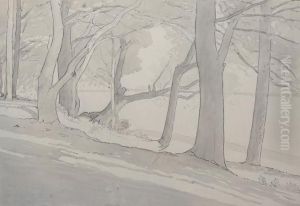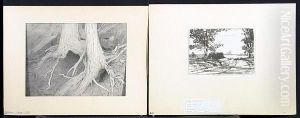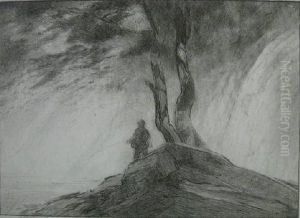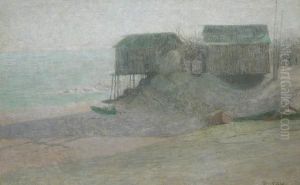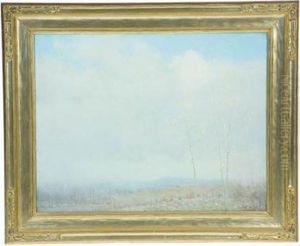Bolton Coit Brown Paintings
Bolton Coit Brown was an American artist, lithographer, and mountaineer, born on September 27, 1864, in Dresden, Yates County, New York. He is best known for his contributions to the development of lithography as an art form in the United States and for his role in establishing the Byrdcliffe Colony, an important site in the American Arts and Crafts movement.
Brown studied at Syracuse University, where he graduated with a Bachelor of Fine Arts in 1885. He furthered his art education in Europe, studying at the Royal Academy in Munich, which was a center for realistic painting and printmaking. His initial work was heavily influenced by the Munich School's dark, rich tones and detailed realism.
Upon returning to the United States, Brown became a prominent art educator, teaching at Stanford University from 1891 to 1895. During his tenure, the 1906 San Francisco earthquake destroyed much of his early work. Brown, however, shifted his focus to lithography, which was then an underappreciated art form in America. He became a leading figure in the medium, experimenting with various techniques and contributing to its recognition as a fine art.
In 1902, Brown became a co-founder of the Byrdcliffe Colony in Woodstock, New York, alongside Ralph Radcliffe Whitehead and Hervey White. This arts and crafts community aimed to provide a collaborative environment for artists, craftsmen, and designers. Although his time at Byrdcliffe was short-lived due to disagreements with other founders, the colony continued to be an influential artistic hub.
Brown's artistry extended to the natural world as well. An avid mountaineer, he was instrumental in the exploration and mapping of the Sierra Nevada in California. His expeditions and surveys resulted in detailed topographical maps and he is credited with first ascents of several peaks. His love for mountains often reflected in his lithographic landscapes, where he portrayed the raw beauty and grandeur of the American wilderness with a masterful grasp of light and shadow.
Throughout his career, Brown was committed to the idea of art as a means of personal and social transformation. He continued to produce and exhibit his lithographs, gaining recognition for his technical innovations and expressive style. He also authored a seminal book on lithography, titled 'Lithography for Artists,' which was published in 1933.
Bolton Coit Brown passed away on September 15, 1936, in Marbletown, New York. Although not as widely known as some of his contemporaries, his contributions to American art, particularly in the field of lithography, have been influential. His work is held in numerous collections, including the Metropolitan Museum of Art and the Smithsonian American Art Museum.
